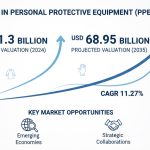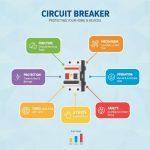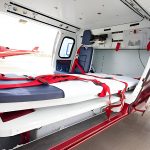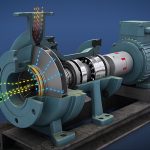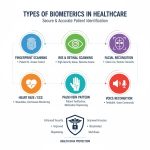Key Takeaways
- The global Artificial Disc Replacement (ADR) market is projected to grow from USD 0.6 billion in 2022 to USD 1.3 billion by 2030, at a CAGR of 12.3%.
- Market growth is driven by an aging population, rising prevalence of back pain, and technological advancements in disc design.
- North America and Europe lead the market, but Asia-Pacific is emerging as a high-growth region.
- Key players are focusing on innovation, strategic partnerships, and expanding their product portfolios.
- Regulatory challenges, cost constraints, and education gaps remain significant hurdles.
- Future opportunities lie in emerging economies, next-generation disc technologies, and patient-centric solutions.
Market Overview and Projections
The Global Artificial Disc Replacement (ADR) Market is experiencing robust growth, reflecting the increasing demand for advanced spinal care solutions. According to Vantage Market Research, the market was valued at USD 0.6 billion in 2022 and is expected to more than double, reaching USD 1.3 billion by 2030. This impressive growth, at a compound annual growth rate (CAGR) of 12.3% between 2023 and 2030, underscores the rising adoption of ADR as a preferred alternative to traditional spinal fusion procedures.
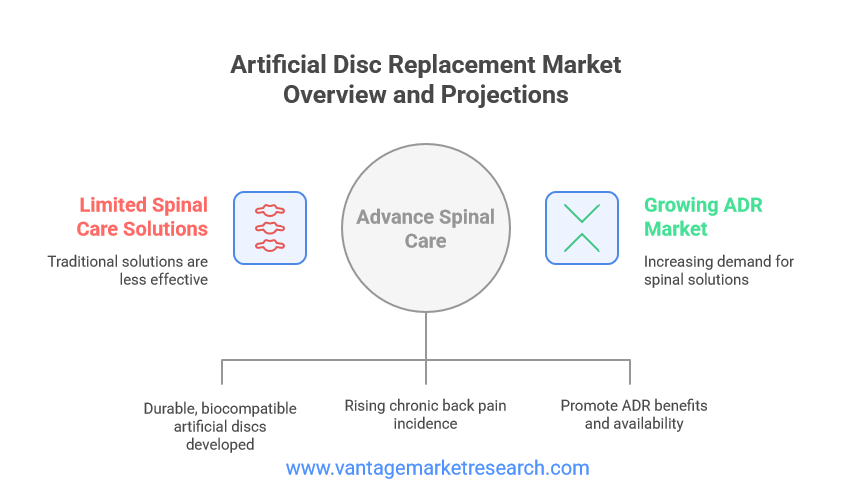
Several key drivers are fueling this expansion. The growing prevalence of degenerative disc diseases, particularly among the aging global population, is a primary factor. As people live longer and remain active into older age, the incidence of chronic back pain and spinal disorders has surged, creating a substantial patient pool for ADR procedures. Additionally, advancements in medical technology have led to the development of more durable, biocompatible artificial discs that better mimic the natural movement of the spine, making ADR a more attractive option for both patients and surgeons.
Regionally, North America dominates the ADR market, thanks to its advanced healthcare infrastructure, high awareness levels, and favorable reimbursement policies. Europe follows closely, with countries like Germany, France, and the UK investing heavily in spinal care innovations. However, the Asia-Pacific region is emerging as a significant growth engine, driven by rising healthcare expenditures, increasing access to advanced surgical procedures, and a large, underserved patient population. Despite these positive trends, the market faces challenges such as stringent regulatory requirements, high procedure costs, and limited awareness in developing regions. Nevertheless, the overall outlook remains optimistic, with ongoing research and development expected to further expand the market’s potential.
Factors Influencing Market Growth
The growth trajectory of the Artificial Disc Replacement market is shaped by a confluence of demographic, technological, and clinical factors. Foremost among these is the aging global population. As life expectancy increases, so does the prevalence of age-related spinal conditions such as degenerative disc disease, herniated discs, and chronic lower back pain. According to the World Health Organization, back pain is one of the leading causes of disability worldwide, affecting millions of people and driving demand for effective, long-lasting treatments.
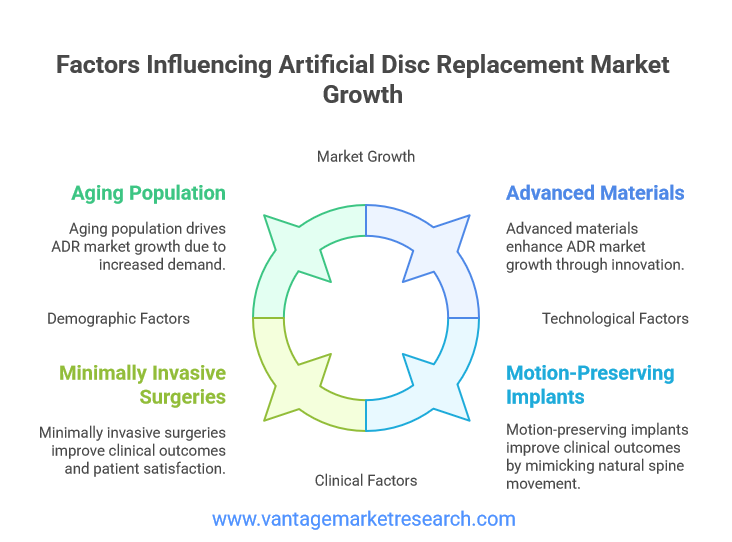
Technological advancements have also played a pivotal role in market expansion. Modern artificial discs are designed to closely replicate the natural biomechanics of the human spine, offering improved range of motion and reduced wear compared to earlier models. Innovations such as motion-preserving implants, minimally invasive surgical techniques, and the use of advanced materials like titanium alloys and medical-grade polymers have significantly enhanced patient outcomes and reduced recovery times. These improvements have made ADR a more viable and appealing option for both patients and healthcare providers.
Another critical factor is the growing preference for minimally invasive surgeries. Patients and surgeons alike are increasingly seeking procedures that minimize tissue damage, reduce hospital stays, and enable faster return to normal activities. ADR fits this paradigm, offering a less invasive alternative to spinal fusion with the added benefit of preserving spinal mobility. This shift in surgical preferences, coupled with rising healthcare awareness and improved diagnostic capabilities, is expected to sustain strong market growth in the coming years.
Segmentation Analysis
The Artificial Disc Replacement market is highly segmented, reflecting the diverse needs of patients and the evolving landscape of spinal care. By product type, the market is broadly divided into cervical and lumbar artificial discs. Cervical disc replacements, which address issues in the neck region, have gained significant traction due to the high incidence of cervical disc degeneration and the success of clinical outcomes. Lumbar disc replacements, targeting the lower back, are also witnessing increased adoption, although they present unique surgical challenges.
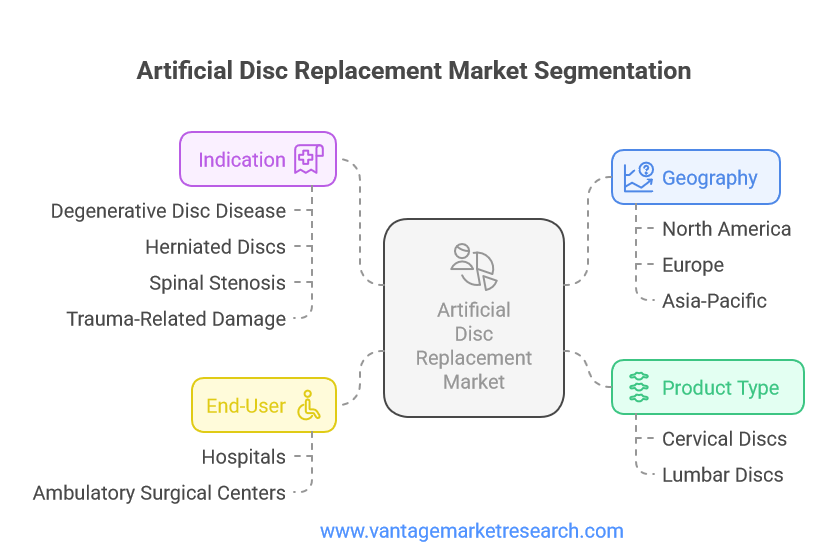
In terms of indication, ADR is primarily used to treat degenerative disc disease, but its application is expanding to include conditions such as herniated discs, spinal stenosis, and trauma-related disc damage. This broadening of indications is expected to drive further market penetration, especially as clinical evidence supporting the safety and efficacy of ADR continues to grow.
End-user analysis reveals that hospitals remain the largest segment, owing to their comprehensive surgical facilities and access to specialized spine surgeons. However, ambulatory surgical centers (ASCs) are rapidly gaining ground, particularly in developed markets, due to their cost-effectiveness, shorter wait times, and patient convenience. Geographically, North America and Europe lead the market, but Asia-Pacific is poised for rapid growth, fueled by increasing healthcare investments, rising patient awareness, and expanding access to advanced medical technologies.
Key Players and Competitive Landscape
The Artificial Disc Replacement market is characterized by intense competition and a dynamic landscape of innovation. Major players include Medtronic plc, Zimmer Biomet Holdings, Inc., Johnson & Johnson (DePuy Synthes), NuVasive, Inc., and Globus Medical, Inc. These companies have established strong market positions through extensive research and development, robust product portfolios, and strategic collaborations with healthcare providers and research institutions.
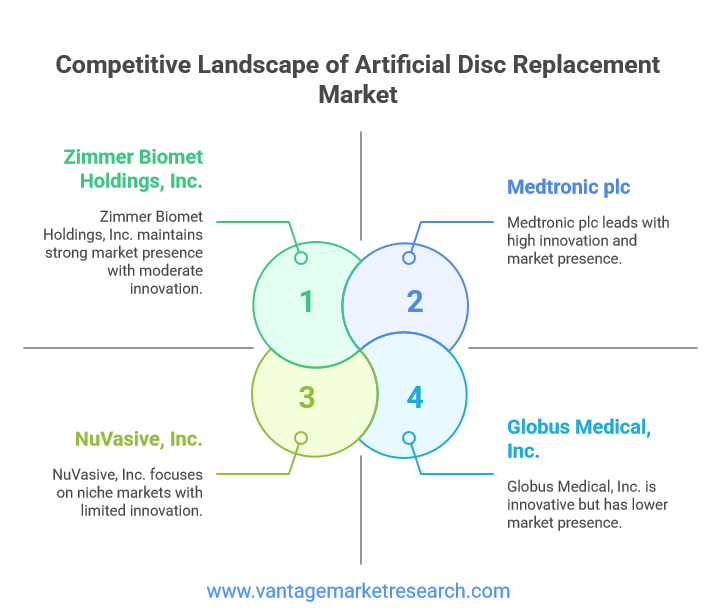
To maintain their competitive edge, leading companies are investing heavily in the development of next-generation artificial discs that offer improved durability, biocompatibility, and ease of implantation. Strategic partnerships, mergers, and acquisitions are also common, enabling companies to expand their geographic reach and enhance their technological capabilities. For example, recent years have seen a flurry of activity in the form of product launches, regulatory approvals, and clinical trials aimed at demonstrating the safety and efficacy of new ADR devices.
Innovation remains a key differentiator in this market. Companies are exploring novel materials, such as ceramic composites and bioactive coatings, to enhance implant longevity and reduce the risk of complications. Additionally, the integration of digital technologies, such as 3D printing and computer-assisted surgical planning, is enabling more personalized and precise treatments. As competition intensifies, the focus is increasingly shifting towards patient-centric solutions that prioritize long-term outcomes and quality of life.
Challenges Facing the Market
Despite its promising growth prospects, the Artificial Disc Replacement market faces several significant challenges. Regulatory hurdles are among the most formidable, as ADR devices must undergo rigorous testing and approval processes to ensure safety and efficacy. These requirements can delay product launches and increase development costs, particularly for smaller companies with limited resources.
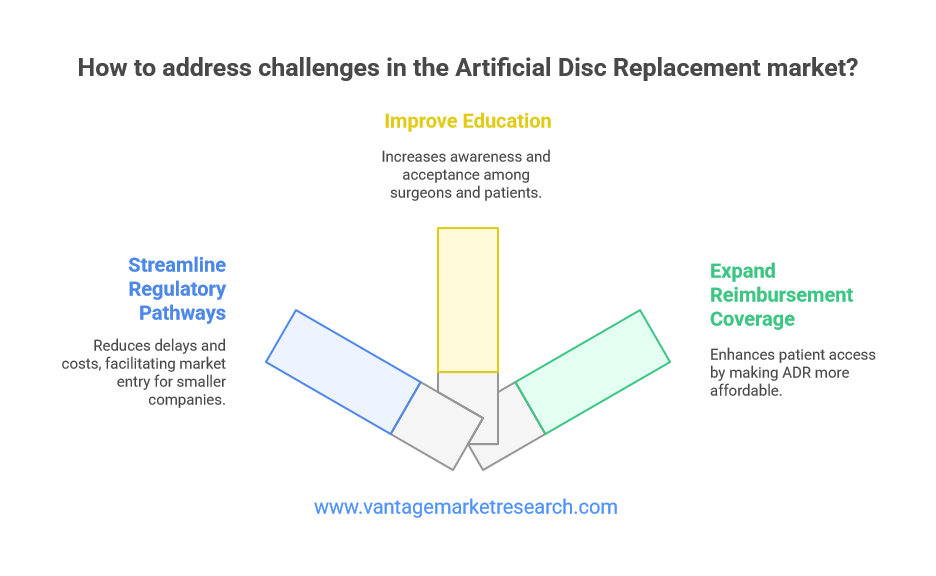
Education gaps among both surgeons and patients also pose a barrier to market adoption. Many healthcare providers remain more familiar with traditional spinal fusion techniques, and may be hesitant to adopt newer, less-established procedures like ADR. Similarly, patients may lack awareness of ADR as a treatment option, or may harbor misconceptions about its risks and benefits. Addressing these gaps through targeted education and training initiatives is essential for broader market acceptance.
Cost constraints and reimbursement issues further complicate the landscape. ADR procedures are often more expensive than traditional spinal fusion, and insurance coverage can be inconsistent, particularly in regions with less developed healthcare systems. This can limit patient access to ADR, especially in emerging markets where out-of-pocket expenses are a significant concern. Overcoming these challenges will require concerted efforts from industry stakeholders, policymakers, and healthcare providers to streamline regulatory pathways, improve education, and expand reimbursement coverage.
Future Growth Opportunities
Looking ahead, the Artificial Disc Replacement market is poised for continued expansion, driven by a range of promising opportunities. Emerging economies, particularly in Asia-Pacific and Latin America, represent untapped markets with significant growth potential. As healthcare infrastructure improves and access to advanced surgical procedures increases, demand for ADR is expected to rise sharply in these regions.
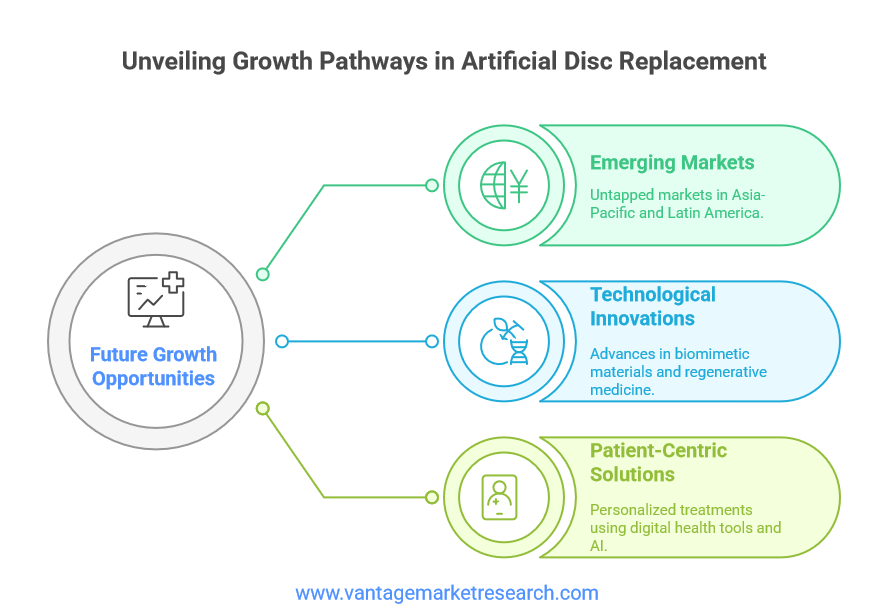
Innovations in artificial disc technologies are also set to transform the market landscape. Ongoing research into biomimetic materials, tissue engineering, and regenerative medicine holds the promise of developing next-generation implants that more closely replicate the structure and function of natural spinal discs. These advances could further improve patient outcomes, reduce complication rates, and expand the range of indications for ADR.
A growing focus on patient-centric solutions and personalized medicine is another key trend shaping the future of the market. Companies are increasingly leveraging digital health tools, such as artificial intelligence and data analytics, to tailor treatments to individual patient needs and optimize surgical outcomes. Enhanced post-operative care, remote monitoring, and patient education initiatives are also contributing to improved satisfaction and long-term success rates.
In summary, while the Artificial Disc Replacement market faces notable challenges, its long-term outlook remains highly favorable. Continued innovation, expanding access in emerging markets, and a relentless focus on patient outcomes are set to drive sustained growth and transform the future of spinal care.
FAQs
- What factors are driving the growth of the Artificial Disc Replacement Market?
- How does the projected CAGR of 12.3% affect the future of the Artificial Disc Replacement Market?
- What is the expected market value of the Artificial Disc Replacement Market by 2030?
- In which year was the Artificial Disc Replacement Market valued at USD 0.6 Billion?
![[Market Research Reports] – Research Google News Blog | VMR.Biz](https://www.vmr.biz/wp-content/uploads/2022/12/logo-removebg-preview.png)



